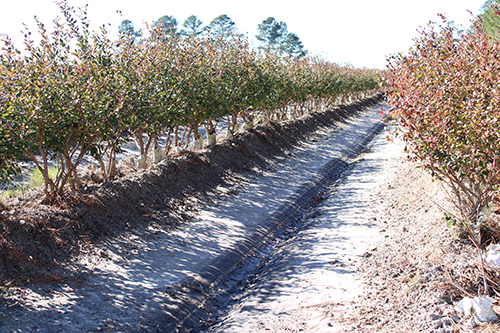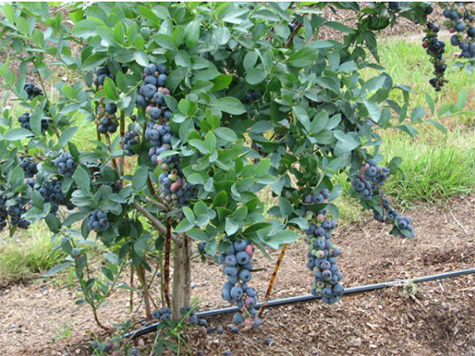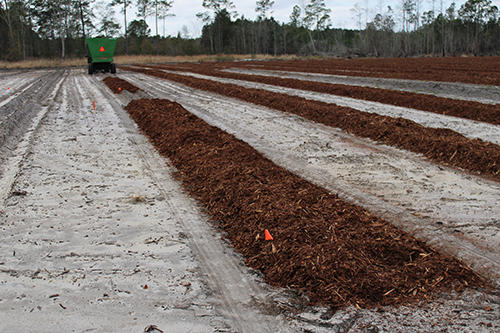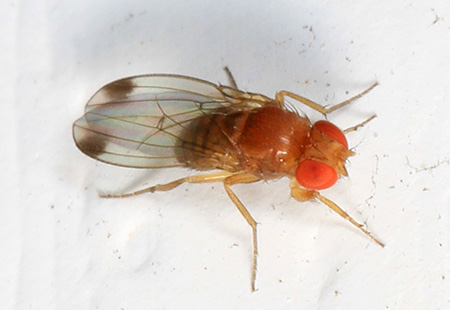The Origin of the Blueberry and the Story Behind This Superfood
Blueberries, a crop present in several parts of the world, represent a relatively recent and important agricultural contribution of North America to the world. The first domestication of the plant occurred around 1900 in New Jersey when Elizabeth White and Frederick Coville domesticated the blueberry from a native species. In 1916, the first commercial varieties were developed, and blueberries began to be grown in several regions of the United States, mostly on the East Coast.
The recent expansion of blueberry production in warm climates, even near the tropics, was influenced by cultivars released from the breeding program of the University of Florida, which in 1950 made genetic crosses between the species Vaccinium corymbosum and Vaccinium darrowii (native to Florida). From these crosses, a low-chill blueberry was developed, known as the southern highbush blueberry (V. corymbosum interspecific hybrid).
The southern highbush blueberry is a hybrid that requires fewer chill units—hours the plant must be exposed to temperatures between 32 and 45 ºF to break dormancy and start blooming—compared to northern highbush types, allowing the state of Florida, southern areas, and Georgia to produce fruits in the U.S. market during March, April, and May. The development of southern highbush also has allowed the production of blueberries in countries such as Mexico and Peru.
The United States is the world's leading producer of blueberries, followed by Canada, Chile, and Peru. The largest blueberry-producing U.S. states are Oregon, Washington, California, New Jersey, Georgia, Michigan, Florida, and North Carolina. Blueberries produced in the United States are available on the market from March to October.
Blueberries are considered a superfood for their antioxidant and anti-inflammatory properties that provide various health benefits, such as:
- reducing the risk of cardiovascular diseases
- reducing the risk of type II diabetes
- improving intestinal microflora
Main Types of Blueberries
There are three species of blueberries grown around the world: northern highbush blueberries, southern highbush blueberries, and rabbiteye.
Northern Highbush Blueberries (Vaccinium corymbosum)
Native to the eastern and northeastern parts of the United States, this species grows wild in the Appalachia region. These types of blueberries grow 5–9 ft tall and need ~800–1000 chill units to break dormancy. The northern highbush blueberry is cultivated primarily in the states of New Jersey, Maryland, and Oregon, because these regions have the adequate number of chilling units to break dormancy.

Southern Highbush Blueberries (Vaccinium corymbosum x V. darrowii)
Southern highbush blueberries are hybrids of Vaccinium corymbosum and V. darrowii and grow up to 6–8 ft tall. Southern highbush blueberry grows in regions with mild climates and requires fewer chill units—about 200–600—to break dormancy. Southern highbush is the type of blueberry grown in California, Florida, Mexico, and Peru.
Rabbiteye Blueberries (Vaccinium virgatum)
This species is native to the southern U.S. and reaches up to 6–10 ft tall. Rabbiteye blueberries require about 300–600 chill units to break dormancy. This type of blueberry is grown in southern areas of the United States, such as Georgia and Alabama.

When grown in the U.S. Pacific Northwest, rabbiteye plants tend to have reduced growth and can suffer cold damage. Rabbiteye blueberries are harvested late in the season and mostly are marketed as frozen products. It is important to plant more than one cultivar of rabbiteye blueberries that have a similar window of flowering because they need cross-pollination for fruiting. The University of Georgia's breeding program has developed various rabbiteye cultivars, listed in Table 1.
| Varieties | Alapaha | Vernon | Titan | Krewer | Brightwell | Ochlockonee |
|---|---|---|---|---|---|---|
| Harvest Season | Early | Early | Early | Early | Mid-season | Late |
Soil Requirements and Pest Problems in Blueberries
Soil
Blueberries grow in acidic soil (pH of 4.5–5.5), so the soil pH must be modified before planting. To maintain soil pH within appropriate parameters, elemental sulfur is added to the soil and sulfuric acid is added to the irrigation water. Blueberries develop and produce well in sandy loam soils with good drainage. It is very important to examine soil drainage before planting because blueberries are susceptible to flooding.

Soil Amendment and Fertilization
Blueberry plants grow well in soils with organic matter content of about 3%. If the soil has less than 3% organic matter, a soil amendment needs to be incorporated. The soil amendment usually is added during land preparation. The use of plant-derived materials is very common in blueberry-producing areas. For example, pine bark is used as amendment in the southern U.S., while Douglas fir sawdust is used in the Pacific Northwest. It is necessary to analyze the physical and chemical properties of amendments before their incorporation into the soil.

Several studies have demonstrated the use of compost from animal, plant, and biosolid waste as amendments for blueberry plantings. However, the use of these products as amendments is not very common among producers. Blueberries prefer the ammoniacal form of nitrogen, so ammonium sulfate is recommended as a fertilizer.
Pests
Main pests vary according to the region where the blueberries are grown. However, the most important pest in all areas of blueberry production in the United States is the spotted-winged Drosophila [SWD; Drosophila suzukii (Marsumura)] because the female lays her eggs in healthy fruits and not in damaged fruits as other vinegar flies do.

Female Drosophila have an ovipositor with serrated edges, which they use to lay their eggs in the fruit. Egg laying begins as soon as the fruit begins to change color and continues through harvest. The ovipositor injures the fruit, which leads to fruit rot and significant yield losses since fruit cannot be marketed or consumed. Several chemical and crop management methods exist to control this pest.
References
Foreign Agricultural Service. (2021, October 21). Blueberries around the globe – Past, present, and future. U.S. Department of Agriculture. https://www.fas.usda.gov/data/blueberries-around-globe-past-present-and-future
Kalt, W., Cassidy, A., Howard, L. R., Krikorian, R., Stull, A. J., Tremblay, F., & Zamora-Ros, R. (2020). Recent research on the health benefits of Blueberries and their anthocyanins. Advances in Nutrition, 11(2), 224–236. https://doi.org/10.1093/advances/nmz065
NeSmith, D. S. (2017).New rabbiteye blueberry varieties from the University of Georgia. University of Georgia Extension. https://smallfruits.org/files/2019/06/New-UGA-Rabbiteye-Blueberry-Varieties-2017-Update.pdf
Prusa, T. J. (2020). An economic analysis of the competitive dynamics in the U.S. fresh blueberry market [Unpublished manuscript]. Department of Economics, Rutgers University. https://www.blueberrycoalitionforprogressandhealth.com/wp-content/uploads/2021/01/An-Economic-Analysis-of-Fresh-Blueberry-Pricing-2020_Prusa.pdf
This publication was coauthored by Natalia Espinoza, Department of Crop & Soil Sciences.
Status and Revision History
Published on Oct 27, 2023


























































